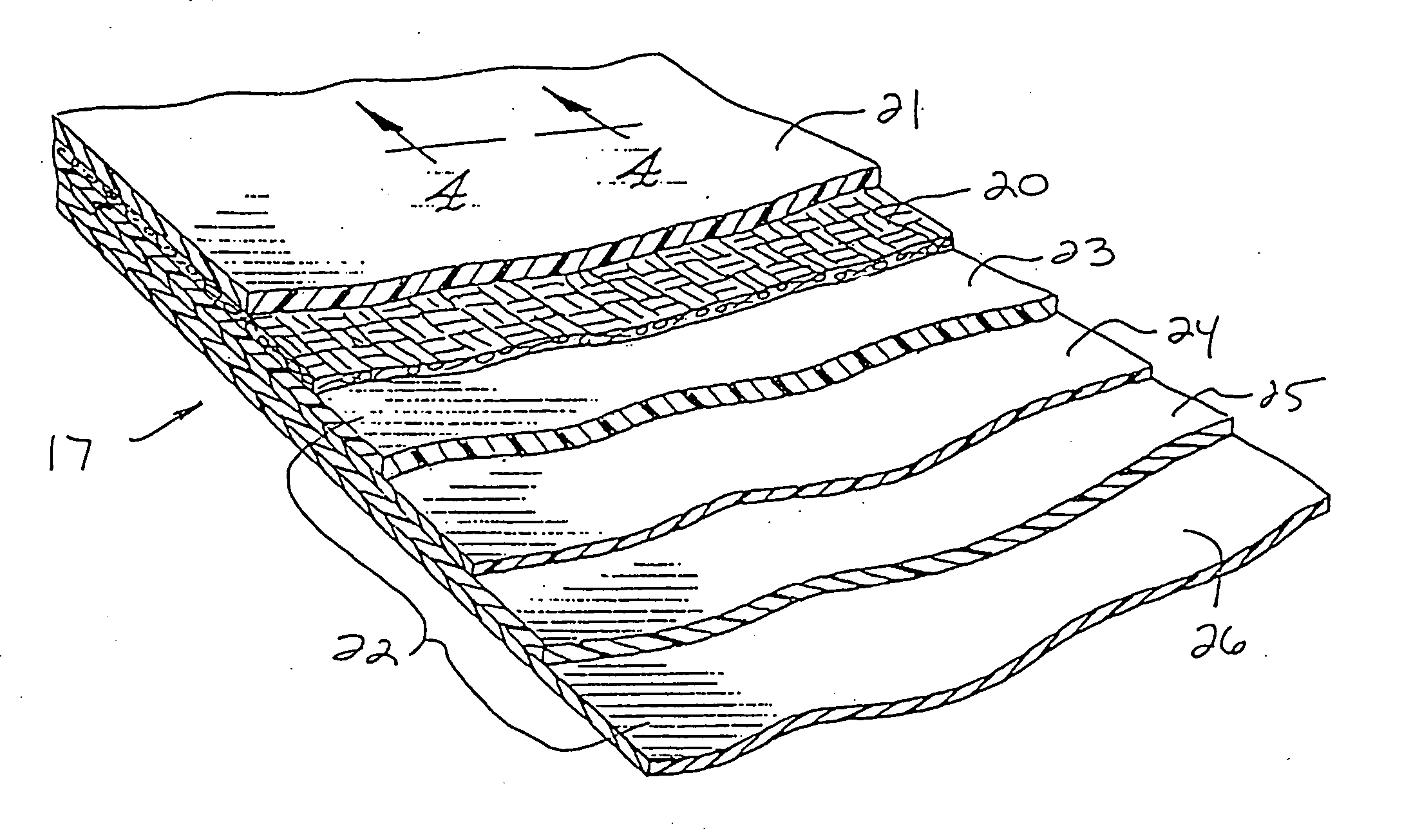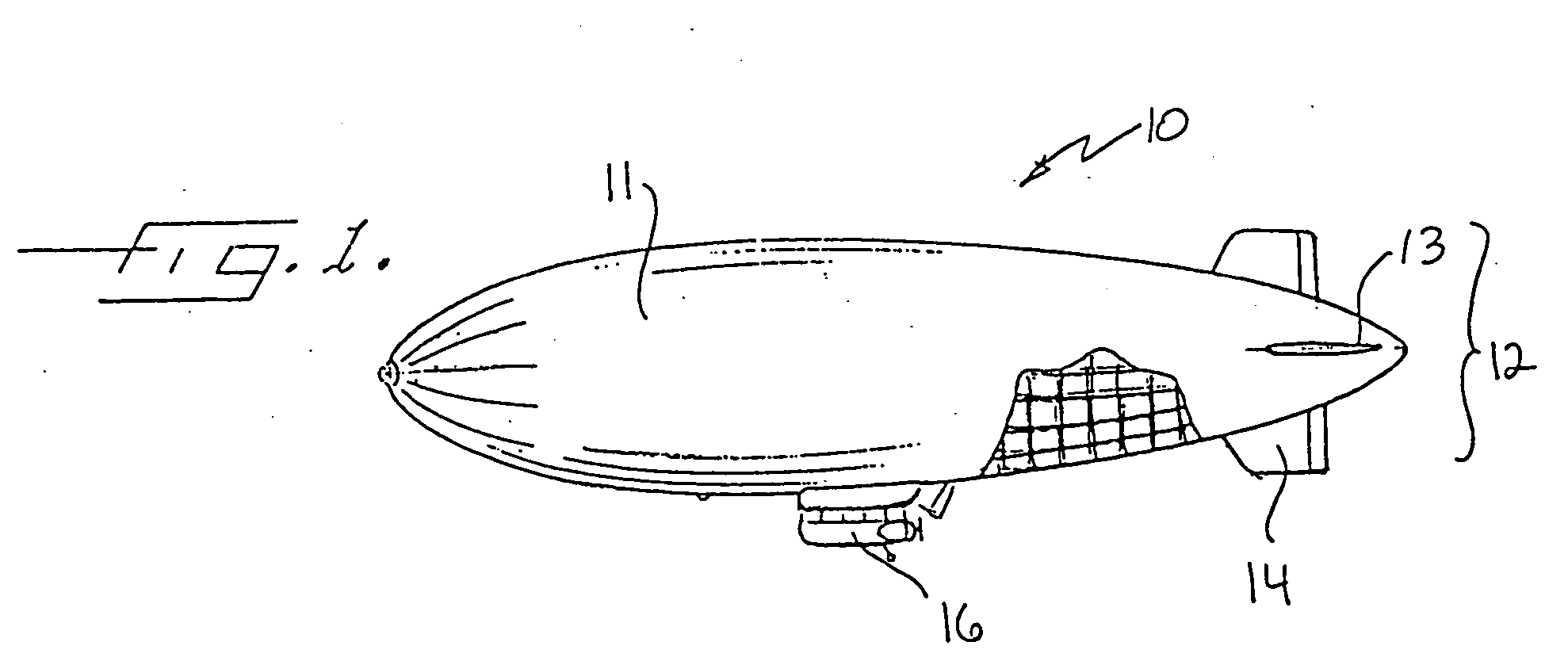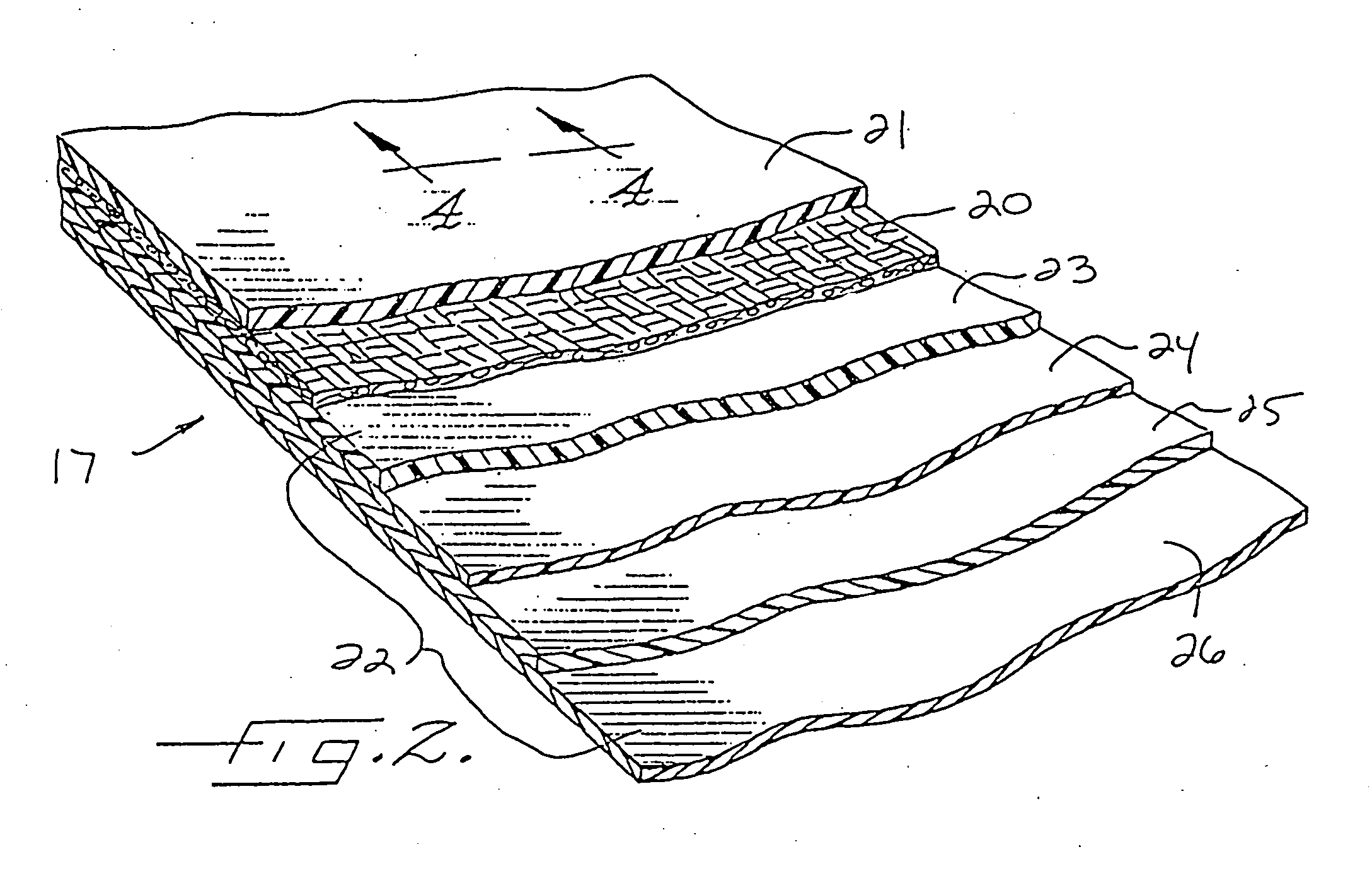High strength lightweight composite fabric with low gas permeability
a composite fabric, low gas permeability technology, applied in the direction of weaving, synthetic resin layered products, chemistry apparatus and processes, etc., can solve the problems of reducing the tear and affecting the performance of the fabri
- Summary
- Abstract
- Description
- Claims
- Application Information
AI Technical Summary
Benefits of technology
Problems solved by technology
Method used
Image
Examples
Embodiment Construction
[0023]FIG. 1 is a perspective view of an airship generally designated at 10. As noted above, the airship 10 is also sometimes referred to as a “blimp,”“dirigible.” Each of these structures has the same features for the purposes of the present invention, and thus it will be understood that the invention applies to each type of airship, regardless of how it may be named in a particular application. Those of skill in this art will thus recognized that the invention is not limited to a particular classification of airship, but offers advantages regardless of the type of airship into which it may be incorporated.
[0024] As illustrated in FIG. 1, the airship 10 includes the gas envelope 11, and the tail assembly indicated by the brackets at 12. In most typical applications, the tail assembly 12 comprises both horizontal and vertical members 13 and 14 respectively. In aerostat applications in which the aerostat is tethered or otherwise maintained in a single position, the vertical and hori...
PUM
| Property | Measurement | Unit |
|---|---|---|
| Length | aaaaa | aaaaa |
| Fraction | aaaaa | aaaaa |
| Time | aaaaa | aaaaa |
Abstract
Description
Claims
Application Information
 Login to View More
Login to View More - R&D
- Intellectual Property
- Life Sciences
- Materials
- Tech Scout
- Unparalleled Data Quality
- Higher Quality Content
- 60% Fewer Hallucinations
Browse by: Latest US Patents, China's latest patents, Technical Efficacy Thesaurus, Application Domain, Technology Topic, Popular Technical Reports.
© 2025 PatSnap. All rights reserved.Legal|Privacy policy|Modern Slavery Act Transparency Statement|Sitemap|About US| Contact US: help@patsnap.com



